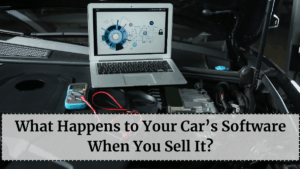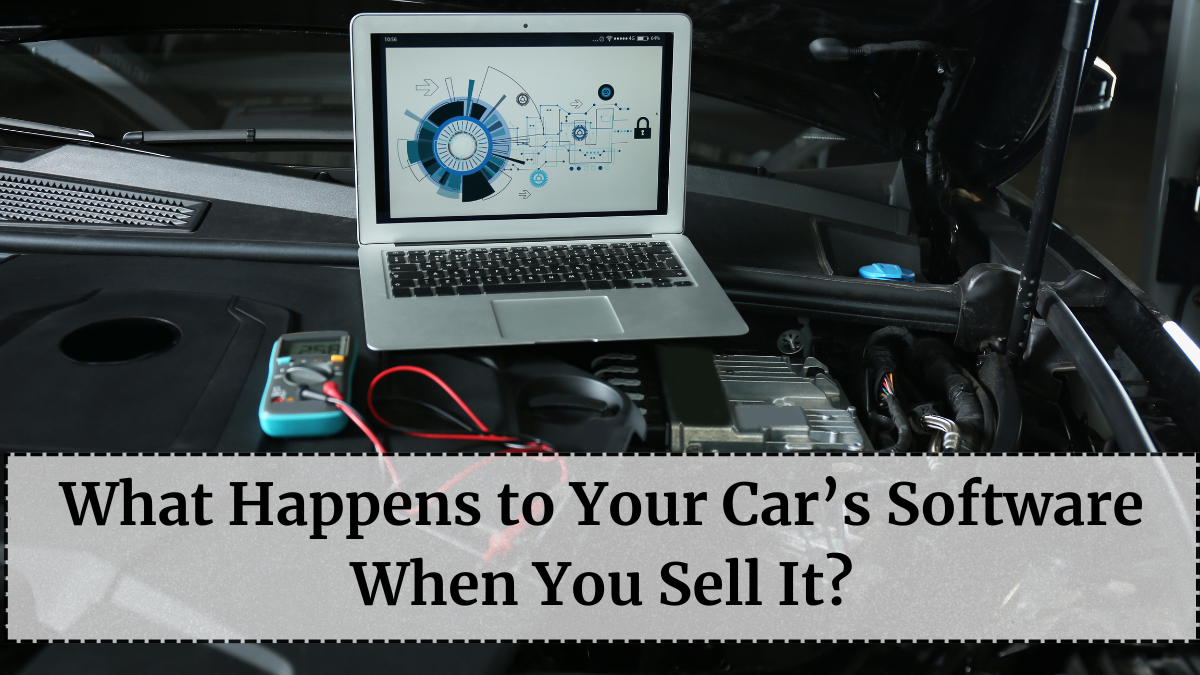In 2025, selling a car isn’t just about mileage and engine condition — it’s also about the software that powers it. From voice assistants to over-the-air updates, cars today are more like computers on wheels. But when you sell your vehicle, what happens to all that software, your personal data, and the features you’ve paid for?
Understanding car resale tech value is now an essential part of ownership. Let’s explore how car software impacts resale price, how ownership transfers work, and what every seller should do before handing over the keys.

Why Car Software Matters in Resale
Cars Have Become Software-Defined
Modern vehicles run on complex software ecosystems that control everything from braking systems to infotainment, battery management, and AI assistants. These systems are constantly updated through Over-the-Air (OTA) updates, meaning a car’s tech can evolve even after it’s sold.
Buyers Now Evaluate Tech, Not Just Condition
A buyer in 2025 doesn’t just ask “How many kilometers?” but also “Does it have the latest firmware?” or “Is the ADAS feature updated?” Cars with recent updates, smart infotainment, and connected features command up to 20% higher resale value.
Subscription-Based Features Affect Ownership
Some brands, like BMW and Tesla, offer paid features such as heated seats, autopilot, or voice control via subscriptions. When the car changes owners, these subscriptions may not automatically transfer unless renewed by the new buyer.
What Happens to Software During Ownership Transfer
1. Data Wipe and Factory Reset
Before selling, your first step should be performing a factory reset. This deletes personal data like saved addresses, call logs, Wi-Fi passwords, and voice profiles. Just as you’d erase a smartphone before resale, your car needs the same treatment.
2. Cloud Account Disconnection
Modern vehicles sync data with cloud-based accounts like Hyundai Bluelink, Tata ZConnect, or MG iSmart. These should be disconnected to prevent the new owner from accessing your history, remote start features, or tracking data.
3. Reassignment of Ownership Access
Once the car is deregistered from your account, the manufacturer’s system assigns a new digital ID to the buyer. This ensures the new owner can receive future OTA updates and connect their devices securely.
4. Subscription Transfer or Termination
If your car includes paid features (e.g., premium navigation or autonomous assistance), manufacturers allow you to either transfer the remaining period or cancel and reset them for the next owner. Always confirm this with the authorized dealer before selling.
5. Software Version Verification
Buyers often check the firmware version during inspection. A car with outdated software might require mandatory updates before re-registration. Ensure your car is running the latest OS and security patches to maintain its market value.
How Software Impacts Car Resale Value
Updated Cars Sell Faster
Vehicles regularly updated with new features and safety enhancements attract tech-conscious buyers who see them as better maintained and future-proof.
Connectivity Adds Value
Cars equipped with Wi-Fi hotspots, voice assistants, and navigation integration are easier to resell. Connected features indicate the vehicle can adapt to future updates, increasing buyer confidence.
Battery and Performance Logs for EVs
For electric vehicles, software tracks battery health, charging cycles, and performance. These digital logs serve as proof of responsible usage and can directly influence resale pricing.
Active Safety and AI Upgrades
ADAS systems, autopilot capabilities, and AI learning modules evolve with time. A car that has the latest self-driving or collision-avoidance updates can stand out in the used car market.
Best Practices Before Selling a Connected Car
Step 1: Back Up Important Data
Save your music playlists, navigation favorites, and connected accounts before performing a reset.
Step 2: Remove Linked Devices
Disconnect smartphones, smartwatches, or any linked home assistant apps that might still control your car remotely.
Step 3: Factory Reset
Perform a complete system wipe through your car’s infotainment settings. This removes your data and restores default configurations.
Step 4: Check for Software Updates
Ensure your car is fully updated before listing it for sale — it’s a simple way to increase trust and value.
Step 5: Get an Official Software Report
Many dealerships and service centers now provide digital inspection certificates showing your car’s firmware version, app history, and diagnostics — an attractive feature for serious buyers.
The Future of Digital Ownership
In the next few years, automakers are moving toward blockchain-based vehicle ownership records that securely link digital data to the owner. This means a transparent transfer of service history, updates, and even in-car purchases.
AI-driven analytics will soon enable used car buyers to check software health, battery life predictions, and system reliability before making a purchase.
For sellers, maintaining your car’s software, updating its systems, and securely transferring digital access will soon become as routine as renewing insurance or registration.
FAQs
Do I need to delete my personal data before selling my car?
Yes, performing a factory reset is essential to protect your privacy and prevent unauthorized access to connected features.
Can software updates increase my car’s resale price?
Absolutely. Updated cars are more attractive to buyers because they offer improved performance and the latest features.
Do car subscriptions transfer to the new owner?
In most cases, subscriptions don’t automatically transfer. The new owner must reactivate or repurchase them through the manufacturer’s system.
What happens if I don’t unlink my car account?
Failing to unlink may allow the new owner to access your cloud data, remote commands, and location history.
How do I prove my car’s software is up to date?
Request a digital service or software report from your dealer or service center showing your car’s current firmware and update history.
Click here to know more.
